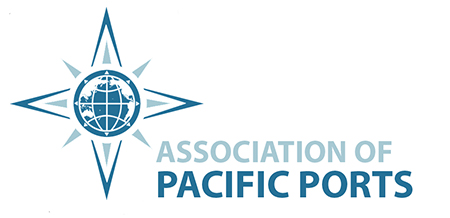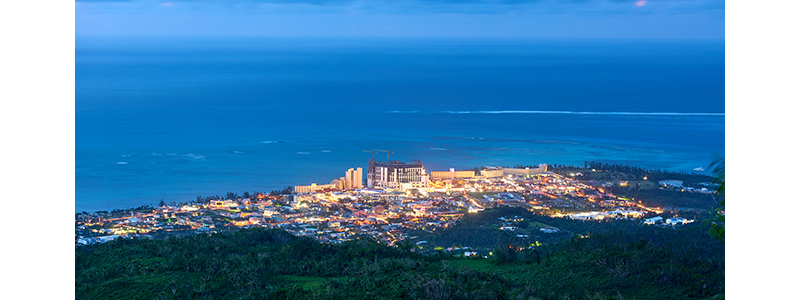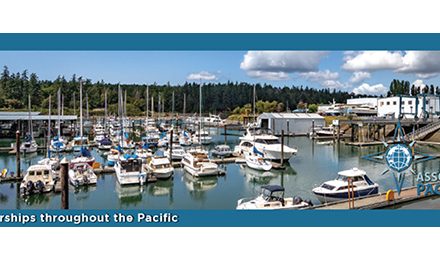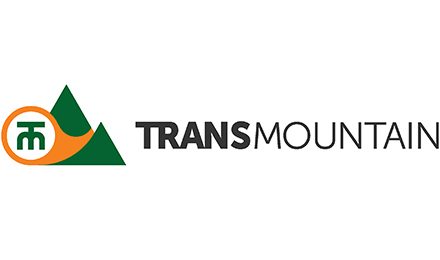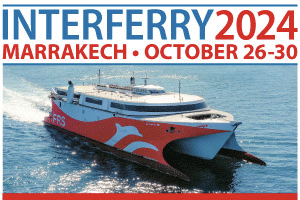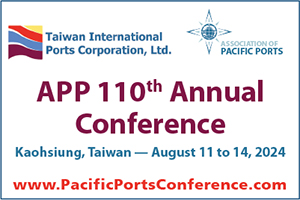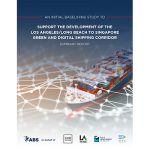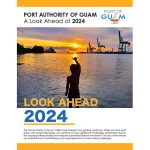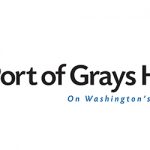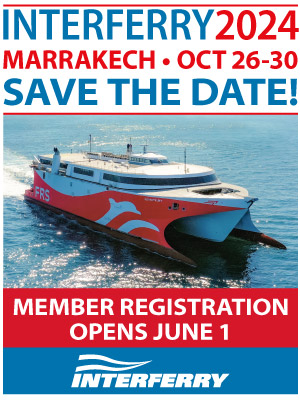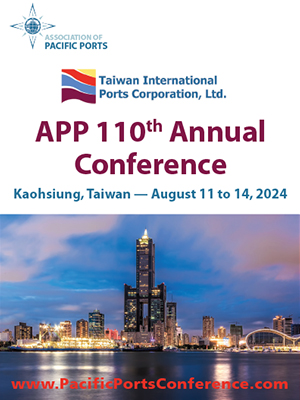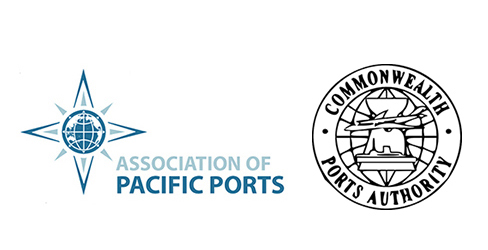 Breathtaking beaches … small Island, big history … world’s best destination for diving … These are just a few of the phrases you’ll come across when searching for information about the Commonwealth of the Northern Mariana Islands (CNMI), the destination of the APP’s 108th Annual Conference (September 25 to 28, 2022), location of the Port of Saipan and home to APP’s new President, Kimberlyn King-Hinds. It’s only fitting then, to shine a spotlight on the CNMI in anticipation of the APP’s coming year of activities.
Breathtaking beaches … small Island, big history … world’s best destination for diving … These are just a few of the phrases you’ll come across when searching for information about the Commonwealth of the Northern Mariana Islands (CNMI), the destination of the APP’s 108th Annual Conference (September 25 to 28, 2022), location of the Port of Saipan and home to APP’s new President, Kimberlyn King-Hinds. It’s only fitting then, to shine a spotlight on the CNMI in anticipation of the APP’s coming year of activities.
A primer on the CMNI
The Northern Mariana Islands has a rich history that can be traced as far back as 2000 BC with settlers arriving from the Philippines and Indonesia. Known as Chamorro, it was these early residents who built the giant pillars of latte stones that have survived to this day.
Claimed as a Spanish territory in the early 16th century by Portuguese explorer Ferdinand Magellan (sailing under a Spanish flag), the Islands received their modern name in 1668 as a tribute to Spanish king Philip IV’s widow, Maria Anna.
At the turn of the 19th century, the Islands fell under German control before serving as a Japanese outpost during World War I and World War II. During one of the most significant battles of WWII — the Battle of Saipan — the U.S. defeated Japanese troops and established a strategic base for U.S. forces.
Following Japan’s defeat, the U.S. was entrusted to administer the Islands as part of the United Nations Trust Territory of the Pacific Islands. During the 1970s, NMI achieved commonwealth status with the U.S. While a new government and constitution were partially put in place in 1978, it wasn’t until 1986 that the Islands officially fell under U.S. sovereignty with the NMI constitution becoming fully effective at that time.
Today, the Commonwealth of the Northern Mariana Islands consist of 14 islands, running north-south over roughly 375 miles. Guam, that chose to remain as a separate territory, lies to the south. The Islands are found about 1,500 miles east of the Philippines, and mid-way between Japan and New Zealand. To the east of the Islands lies the Marianas Trench – the deepest point in the world’s oceans.
Lightly populated through the northern islands, the three southern-most islands — Saipan, Tinian, and Rota — make up the majority of CNMI’s population and economic activity. As the largest island and with more than 90 percent of the CNMI population (estimated at approximately 52,000 in 2021), Saipan serves as the capital and seat of the government.
With tourism as the main contributor to the CNMI economy, impacts from the pandemic as well as Typhoon Soudelor in 2015 and Super Typhoon Yutu in 2018 have been significant. Pre-dating the pandemic, the CNMI had already recognized the need for an economy that was diversified beyond tourism. In 2019, an ambitious economic and infrastructure strategy outlined steps to build and grow new industries such as agriculture, technology, and high-end tourism.
The Commonwealth Port Authority
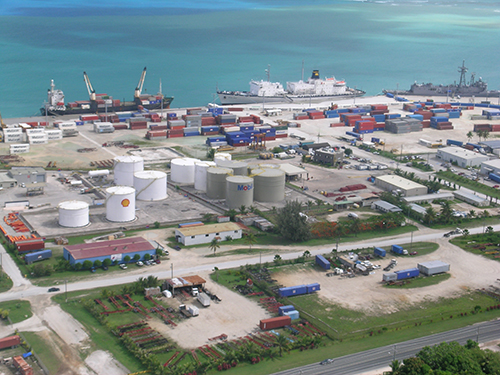
The Port of Saipan
At the heart of the CNMI economy is the Commonwealth Ports Authority (CPA). Created in 1981, the CPA manages and operates all airports and seaports on Saipan, Tinian, and Rota. They are governed by a seven-member Board of Directors appointed by the Governor, with the advice and consent of the Senate of the Commonwealth Legislature. The Board appoints the Executive Director to carry out the goals and objectives of the Authority and to oversee its day-to-day operations and management.
As current Chair of the CPA Board of Directors, and President of the Association of Pacific Ports, Kimberlyn King-Hinds is actively advancing both the mission of the APP as well as exploring opportunities that will serve to improve the CPA and further the CNMI and its residents. “Through the promotion of efficiency and effectiveness in ports across the Pacific, we can work together to share knowledge and resources to the benefits of the communities we all serve,” she said.
With Executive Director Christopher Tenorio in charge of a dedicated and enthusiastic staff, the CPA plays an important role in the CNMI economy. Projects that speak to continual improvements — and indeed the rebuilding of infrastructure damaged by Typhoons Soudelor and Yutu — are well documented in the 2019 CNMI Comprehensive Economic Development Strategy Update and highlight initiatives that work to better serve the growing facilities of all three ports and all three airports.
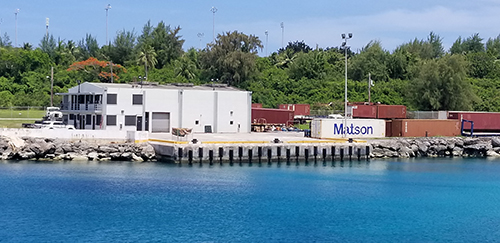
Rota West Harbor
Starting with a look at the Port of Saipan, the facility encompasses 2,600 linear feet of berthing space with a 22-acre container yard and amenities that include dockside lights for nighttime operations, refrigerated containers outlets with a backup power source, a seawater fire-fighting system, two fuel storage facilities, three freight forwarding companies and three shipping agents, improved navigational aids and repositioned harbor buoys to mark the safest route into port with the assistance from the U.S. Coast Guard.
The Port of Tinian has three finger piers available for berthing plus a small boat ramp. There is one stevedoring company available at the Tinian harbor plus a fuel bulk plant operated by Mobil Oil.
Rota West Harbor has eight 22-foot boat slips with quarantine, customs and immigration services available as well as one stevedoring company and two storage companies.
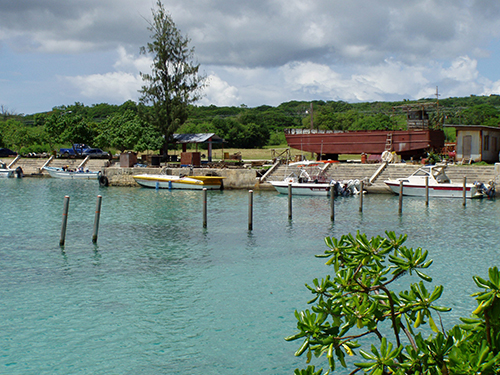
Tinian Harbor
The Saipan International Airport can accommodate wide-bodied aircraft on a runway that is 8,700 feet long, 150 feet wide with a parallel taxiway and connecting taxiways. Amenities include immigration and customs processing with direct flights arriving from Japan, Korea, Hong Kong, China, Guam, and the Philippines; 24-hour operating air traffic control and aircraft rescue fire-fighting personnel/equipment plus a major duty-free concessionaire; six car rental companies; and an experienced caterer providing service for flight kitchen and restaurants.
The Tinian International Airport serves inter-island travel from Saipan, Rota, and Guam, and can currently accommodate single engine aircraft with capacity of up to nine passengers. The runway is 8,600 feet in length with a parallel taxiway and two connecting taxiways at each runway end.
Rota’s Benjamin Taisacan Manglona International Airport offers inter-island travel from Saipan and Guam. Current aircraft at the Rota Airport includes a Navajo aircraft with capacity of up to eight passengers. The runway is 7,000 feet long and 150 feet wide, capable of handling 737s or 727s with restricted landing and takeoff load. The terminal can accommodate 100 passengers at any given time.
With the APP Annual Conference scheduled for September 25 to 28, 2022, attendees can expect comfortable temperature ranges of between 75 to 82 degrees Fahrenheit — perfect for golf, diving, a tour of port facilities and other excursions that highlight the beauty of Saipan and the Northern Marianas Islands.
Visit: https://www.pacificportsconference.com/ for up to date details on planning for the conference.
